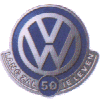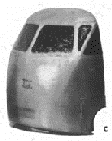|
|
|
 |
The
story of the most |
 |
How a Dutch entrepreneur conceived the transporter....
The year is 1947. The businessman Ben Pon travels from Amersfoort in the Netherlands to the German town Minden. He has a appointment with the British authorities just after world war II, the British had operational control of the Volkswagen factory. Pon likes to speak to them, because he believes in the quality of Volkswagen's product. His plan is to become the Dutch Volkswagen importer. Pon's visit produces results which were above expectations.
|
At Wednesday
23rd of April has Ben Pon at meeting with the British. He
talks through his ideas about the import of Volkswagens
in the Netherlands. But this a special day, as he does
something else. He takes his notebook and he makes a
drawing of a oblong transport vehicle. As matter of fact
it is not more then a soapbox on wheels, in front, the
cab and in the back, the engine. How his conversation
ends with the British nobody knows. But one thing is for
sure. For his time, 1947, his idea is revolutionary. It
is brilliantly simple, a large cargo space in a small
area. According to Pon, the vehicle has a weight of 750
kilos and the with the cargo being easily 750 kilos as
well. Ponīs based his design on the so-called
Plattenwagen. A primitive vehicle, the Plattenwagen looks
like a push bike with a Moped engine. The Volkswagen
engineers had designed it for internal factory
transportation at the Volkswagen plant. Like the
Plattenwagen his design must be built on the chassis of a
beetle.
|
To minimize air resistance. |
|
 |
The 2 first
prototypes of the Volkswagen Transporter, above-mentioned
as "Typ 29" ** at first, are developed by the
designers at Volkswagen. These cabins ( A and B ) **("Typ 29" is Germans for Type 29) |
A blueprint for the future.
 |
At first, Pon's brilliant idea is left alone. But not for long. A year later ( Ben Pon and his brother Wijnand became the first official Volkswagen-importers of the world) Pon received a message from Volkswagen . Heinrich Nordhoff, the new chief of Volkswagen, and the technical manager Alfred Haesner, had decided to developed Ben Ponīs idea. Heinrich Nordhoff and Alfred Haesner consent to the development of Typ 29. And so Ben Pon became the inventor of the Volkswagen Transporter. His simple design of a transport-van is the blueprint for the future. Until 1990 his design can be seen in all Volkswagen Transporters.
Full speed ahead..
Volkswagen is rushing, in November of 1948, to develop the Typ 29 transportwagen They are busy drawing, welding and bolting. After about one year, the two cabins are finished. They resemble each other, in that they are angular of pieces of welded tin. The cabins have no curvature at all. This is due to limitations in the manufacturing capabilities. It is a lot easier for the developers to work with curvatures than it is for the production facilities. The first scale model of Typ 29, both models, is tested in the wind tunnel of the technical high school at Braunschweig with poor results. The wind resistance is much to high, and there are unwanted aerodynamic side effects. But the high school of Braunschweig has a third proposal to offer. A ascetically pleasing rounded cab which tapers into a cargo area. The air resistance is about 40% better then the original design ! This final cabin is used for the full scale prototype.
VolkswagenBUS history page - 1 -